Listen to a radio story by Annenberg Radio News reporter Matthew Richmond
Press release from the office of Eva Kandarpa Behrend.
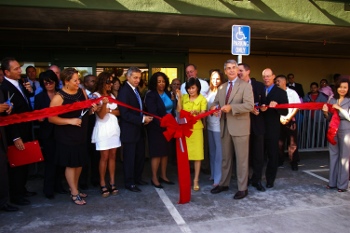
Superior Market plans to celebrate its newest location with food specials and giveaways throughout the weekend.
“Today we are celebrating the first of many great redevelopment milestones in our community,” Perry said at during the opening ceremony. “We now have our very own full-service, community-serving grocery store here in the heart of Central Avenue. No longer will our community members have to travel long distances to access what every neighborhood should have by right-a grocery store with fresh produce and many fine food products to choose from.”
Superior Market hired 130 employees with the help of the workforce development office and Los Angeles Trade Technical College with an emphasis on local hiring. New employees were on-hand to greet and serve the hundreds of customers who came to the store’s grand opening celebration.
The new Superior Market is part of a larger mixed-use development that includes 45,000 sq. ft. of retail and 85 units of affordable family housing developed by Beyond Shelter and Oppenheim LLC. The project represents a $27.5 million dollar investment in the community.
“When, I took office over 8 years ago, I joined in a discussion with everyone-stakeholders, local community members, business owners, developers, and non-profits. That conversation has led directly to today’s opening,” added Perry. “We have all understood, invested, and believed in the idea that Central Avenue would be a revitalized community complete with neighborhood-serving amenities and quality housing options for all. And, now the proof is all around us.”
Central Avenue is home to major redevelopment efforts initiated and supported by Councilwoman Perry who is committed to maximizing the use of government agencies that include the Community Redevelopment Agency and the Los Angeles Housing Department to stimulate economic development, create jobs and provide much needed affordable housing for the community. Next month, the city will celebrate the opening of a new Neighborhood City Hall, a $13 million dollar investment by the City of Los Angeles in the community. The building will be Silver LEEDS certified, meeting strict green building design guidelines. More family housing and another grocery store are set to open at Adams & Central along with a senior housing project with retail space at 33rd and Central in Spring of 2010, offering a fresh new look to the historic Central Avenue community.
Councilwoman Perry represents the Ninth Council District, which encompasses the most culturally diverse and vibrant communities in Los Angeles, including Bunker Hill, Little Tokyo, and South Los Angeles.









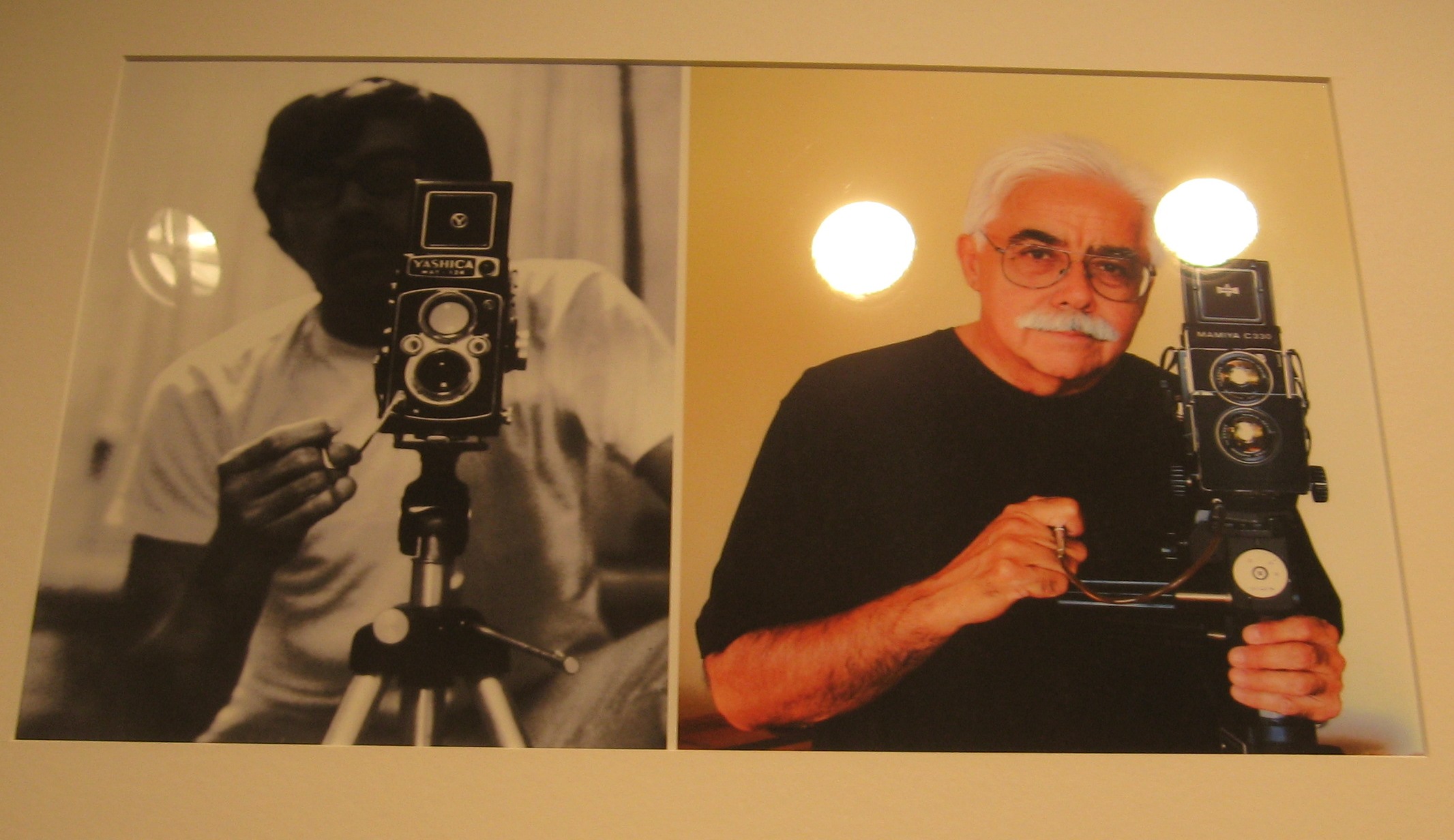 A man in a cowboy hat sits alone on a bench beside Echo Park lake. The foreground is dark, and the man is shrouded in the shadow of a tree. He seems isolated, lonely. His face is lowered just slightly enough to suggest despair. His jacket and upturned collar are a strange juxtaposition against the sunshine of Los Angeles. Beyond the grassy verge lies infinite light – a world of burdening heat, to seek refuge from in the shade. Or perhaps a bright city, with new opportunities floating on the crest of every sparkling ripple and into the busy streets above.
A man in a cowboy hat sits alone on a bench beside Echo Park lake. The foreground is dark, and the man is shrouded in the shadow of a tree. He seems isolated, lonely. His face is lowered just slightly enough to suggest despair. His jacket and upturned collar are a strange juxtaposition against the sunshine of Los Angeles. Beyond the grassy verge lies infinite light – a world of burdening heat, to seek refuge from in the shade. Or perhaps a bright city, with new opportunities floating on the crest of every sparkling ripple and into the busy streets above.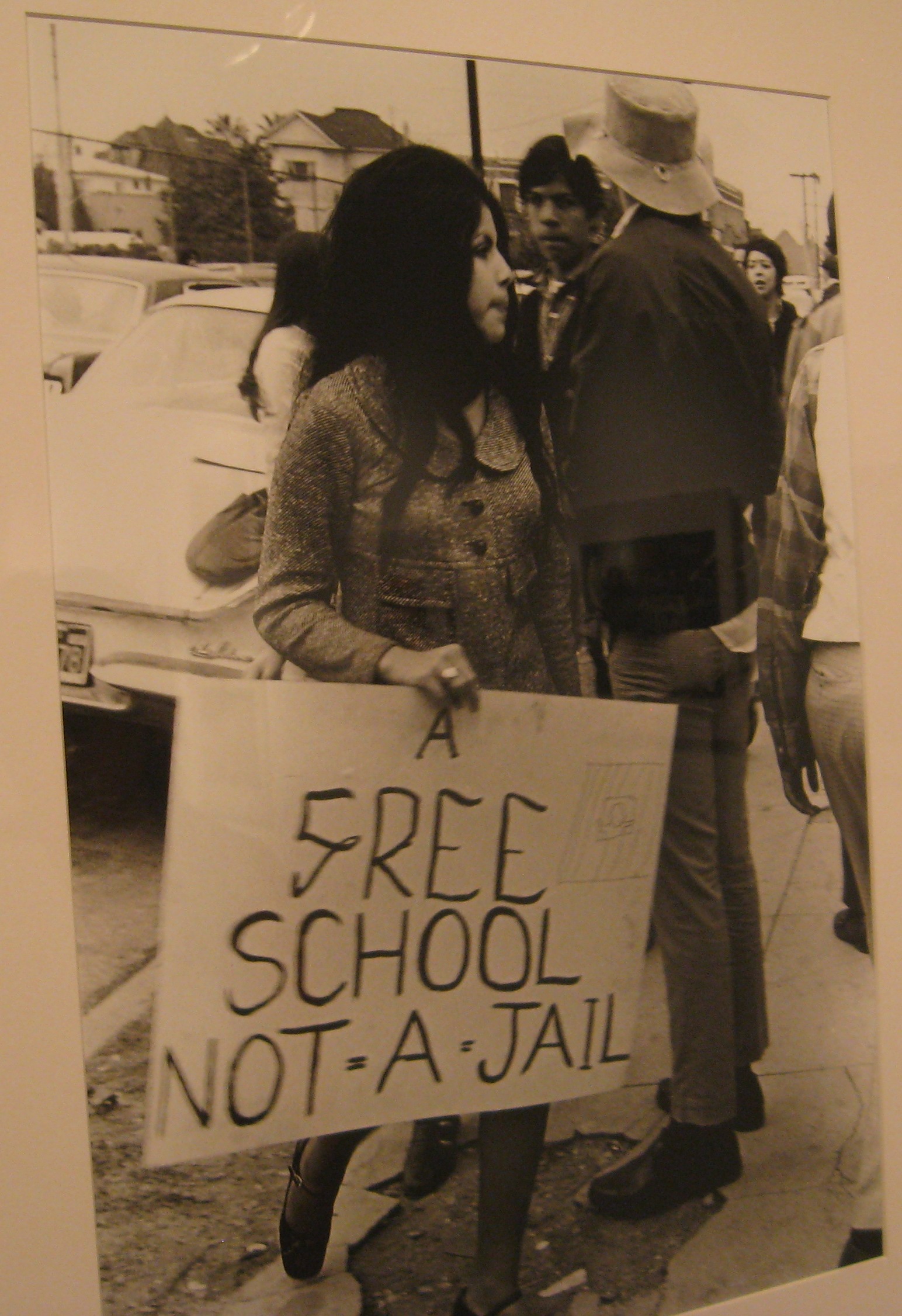 Castillo has been documenting Chicano society since he moved to Los Angeles with his family from El Paso, Texas when he was 16 years old. It was tumultuous time. The city’s demographics were shifting rapidly, and the Chicano Civil Rights Movement was erupting in an energetic rush. Castillo witnessed the "High School Blowouts" in 1968, snapping the pictures "Down with Brutality" and "A Free School Not-A-Jail" during a student protest at Roosevelt High School in Boyle Heights.
Castillo has been documenting Chicano society since he moved to Los Angeles with his family from El Paso, Texas when he was 16 years old. It was tumultuous time. The city’s demographics were shifting rapidly, and the Chicano Civil Rights Movement was erupting in an energetic rush. Castillo witnessed the "High School Blowouts" in 1968, snapping the pictures "Down with Brutality" and "A Free School Not-A-Jail" during a student protest at Roosevelt High School in Boyle Heights. 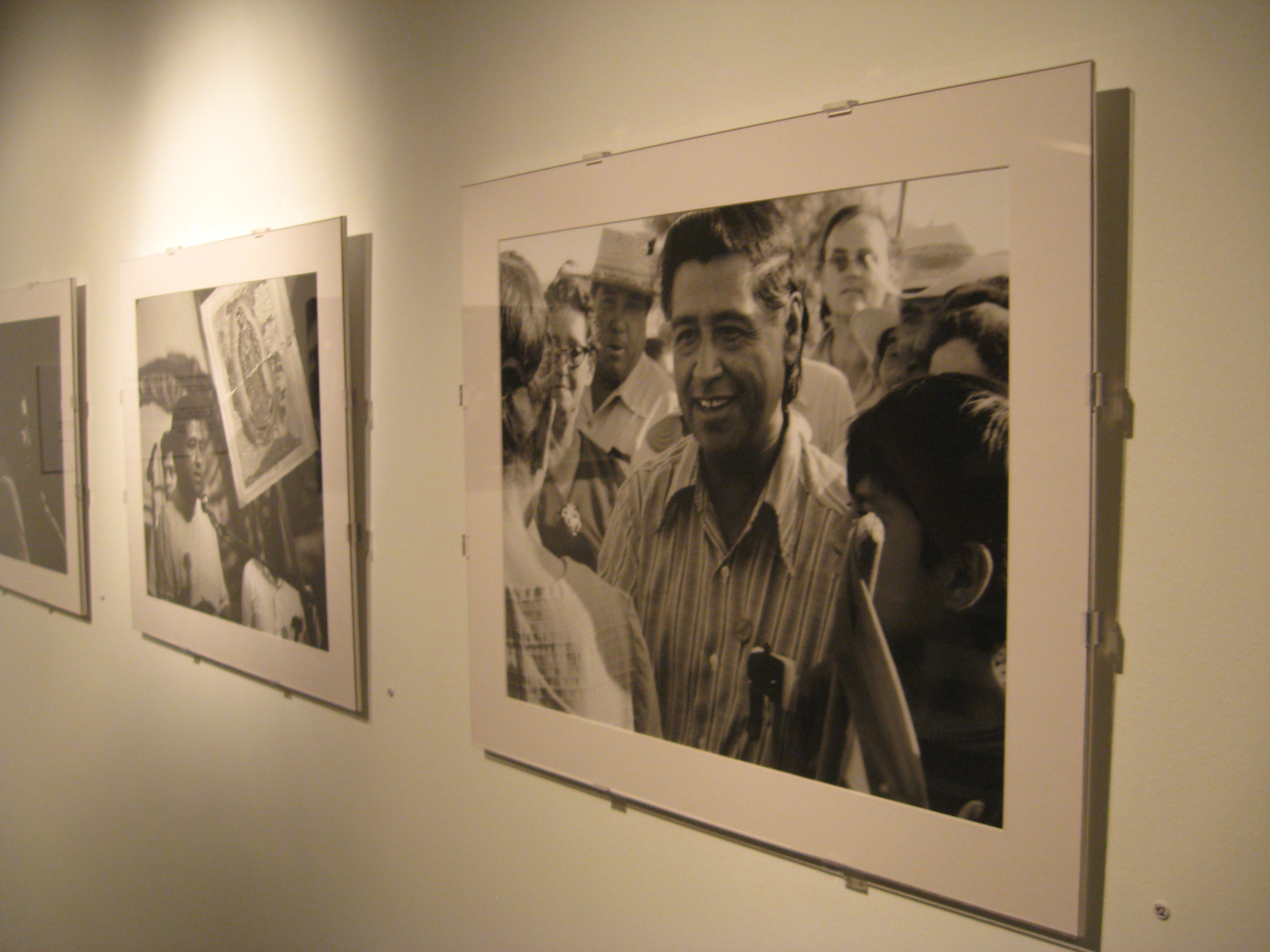 The images are naturally iconic, evocative of the sepia-toned sentiment that accompanies historical art work. But clustered together in the basement room of the Theatre Center building, Castillo’s work risks becoming reminiscent, rather than present. The exhibit is composed of faces and scenery now long familiar, and rests heavily on the symbolism of a revolutionary era, rather than seeking to break new ground. Among the powerful depictions, the simpler images stood out. The subtlely of a mother walking with a young child beside a graffited brick wall, or two young women, one holding a baby, waiting for a bus beside an extravagant mural, seemed more resonant than the rallies, speeches and politics.
The images are naturally iconic, evocative of the sepia-toned sentiment that accompanies historical art work. But clustered together in the basement room of the Theatre Center building, Castillo’s work risks becoming reminiscent, rather than present. The exhibit is composed of faces and scenery now long familiar, and rests heavily on the symbolism of a revolutionary era, rather than seeking to break new ground. Among the powerful depictions, the simpler images stood out. The subtlely of a mother walking with a young child beside a graffited brick wall, or two young women, one holding a baby, waiting for a bus beside an extravagant mural, seemed more resonant than the rallies, speeches and politics. .jpg) Later, an African-American man, dressed in multi-colored, tie-dye pants and a customized leather jacket, leaned in and adjusted his glasses to get a closer look at four similarly-clad Latino men inside one of the frames. "Los Four," taken in 1974, shows artist-friends of Castillo’s smiling happily beside their bright, spray-painted mural, designed to promote graffiti as art, not vandalism.
Later, an African-American man, dressed in multi-colored, tie-dye pants and a customized leather jacket, leaned in and adjusted his glasses to get a closer look at four similarly-clad Latino men inside one of the frames. "Los Four," taken in 1974, shows artist-friends of Castillo’s smiling happily beside their bright, spray-painted mural, designed to promote graffiti as art, not vandalism.






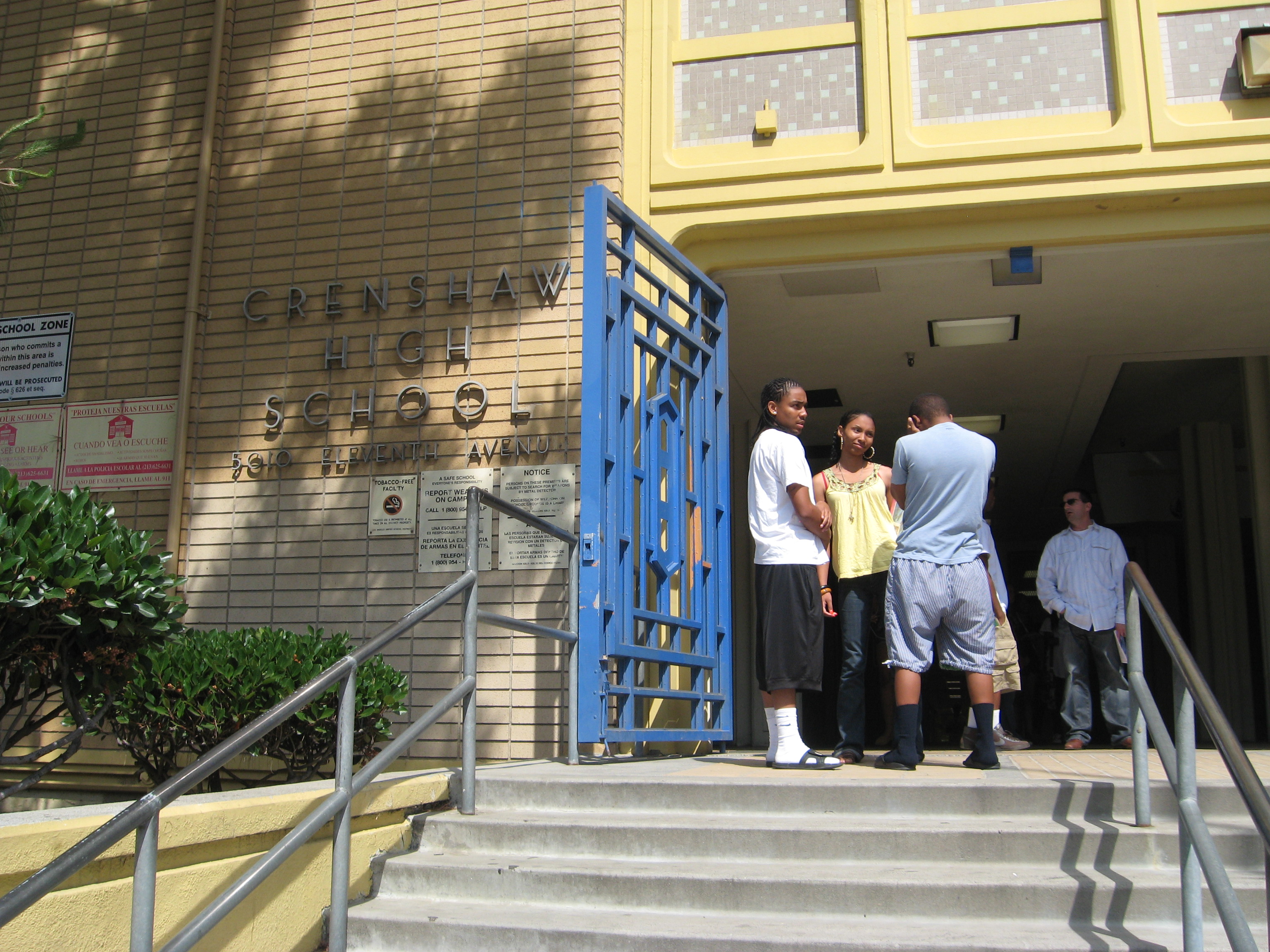 The impact on the city in the long run, however, will be severe. "The number one thing that an economy needs is an educated work force, and that’s what we look to the LAUSD to provide," said Fernando Guerra, Director of the Center for the Study of Los Angeles. "Less resources mean less opportunity and less progress." Poorer children are a target of educational cutbacks, but so too are LA’s African-American and Latino communities. Together, Black and Hispanic students made up 85 percent of LAUSD high school enrollment in 2007/2008, at 10.9 percent and 73.7 percent respectively, totaling more than 575,000 students. According to Guerra, the under-education of lower-income African-American and Latino communties, by their sheer numbers, means that the education level of the city as a whole will fall in the next few years.
The impact on the city in the long run, however, will be severe. "The number one thing that an economy needs is an educated work force, and that’s what we look to the LAUSD to provide," said Fernando Guerra, Director of the Center for the Study of Los Angeles. "Less resources mean less opportunity and less progress." Poorer children are a target of educational cutbacks, but so too are LA’s African-American and Latino communities. Together, Black and Hispanic students made up 85 percent of LAUSD high school enrollment in 2007/2008, at 10.9 percent and 73.7 percent respectively, totaling more than 575,000 students. According to Guerra, the under-education of lower-income African-American and Latino communties, by their sheer numbers, means that the education level of the city as a whole will fall in the next few years..jpg)
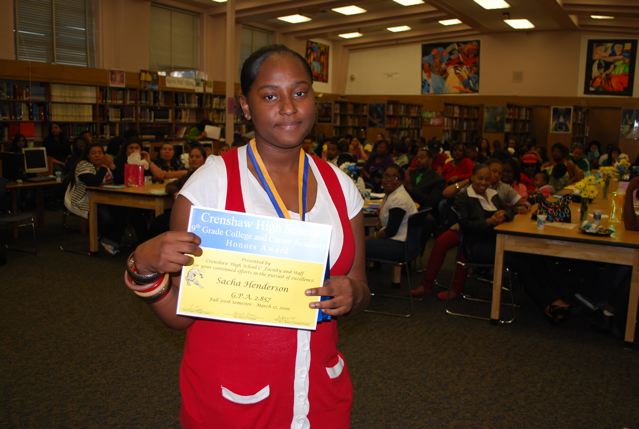
.jpg)





